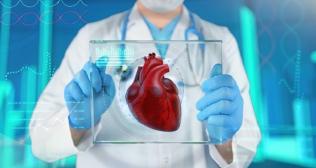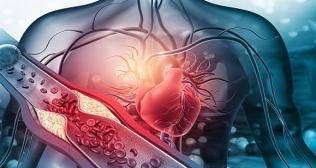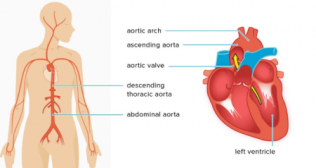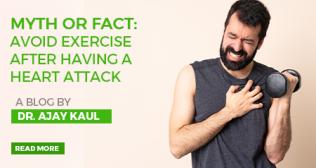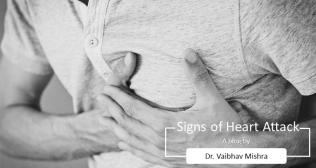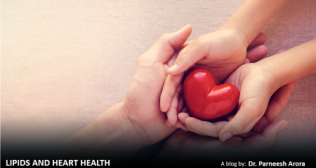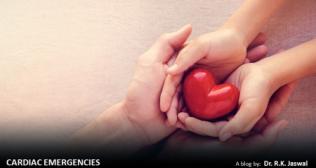What Is Angina Pectoris?
Overview
Derived from the Latin phrase that translates to “strangling in the chest”, Angina pectoris, or just angina, is often a term which is used to describe chest pain or discomfort. Usually temporary in nature, this pain is often caused by decreased blood flow to the heart muscle characterized by a squeezing sensation in the chest region. Owing to the reduction in the blood flow, there is a lack of oxygen supplied to the heart muscle thus resulting in chest pain. Furthermore, this pain might even radiate to other parts including the arms, neck, shoulders, and the shoulder blades on the back. Moreover, because of the temporary nature of this pain – usually between 1 to 15 minutes – Angina is considered to be a precursor or a symptom of an underlying coronary artery disease. Coronary artery disease occurs as a result of the narrowing of the coronary arteries that are responsible for carrying blood and oxygen to the heart muscle.
In addition, despite not being a heart attack per se, Angina can put an individual under higher risk for a heart attack which is why immediate medical attention is suggested if any discomfort is experienced. Angina can be further classified into three types:
- Stable Angina as the name suggests entails that there’s no immediate danger to the patient and may feel like gas or indigestion. This is also regarded as the most common type of Angina and the associated pain usually lasts for anywhere under 10 minutes. The trigger for this angina is ordinarily because of intense physical activity or severe exertion or even anxiety or emotional stress. This pain can be relieved within a few minutes by taking appropriate rest or by taking the prescribed cardiac medications.
- Unstable angina is less common and does not follow a regular pattern. It is also considered to be a more serious version of Angina because rest and medication do little to relieve the person. As a matter of fact, this normally strikes the person during periods of rest and lasts longer coupled with symptoms which are more acute and serious in nature.
- Variant and Microvascular Angina Variant or Prinzmetal’s angina and microvascular angina are quite rare as compared to the above two. Variant Angina is caused by coronary spasm which results in the coronary artery getting temporarily narrowed thus causing a shortage of blood supply to the heart. It can be relieved by medicine. Microvascular angina, on the other hand, is a recently discovered type of angina and can cause chest pain in the patients even if they don’t seem to have a blockage present in the coronary artery. This pain can be caused as a result of a fault in the tiny blood vessels responsible for feeding the heart, arms, and legs.
Symptoms
Angina symptoms may resemble other medical conditions or problems and every patient may experience symptoms differently. Patients can suffer from the following symptoms including:
- Numbness or a loss of feeling in the arms, shoulders, or wrists.
- A sense of discomfort in the jaw, neck, arms, upper abdomen, shoulder or back
- Shortness of breath
- Fatigue and nausea accompanied by bouts of dizziness
- A feeling of burning or intense pain across the chest
- A pain quite similar to indigestion or heartburn
Diagnosis
Angina is diagnosed by a doctor by initially conducting a physical examination. The doctor might also ask the individuals questions pertaining to the symptoms experienced, risk factors and family history. Risk factors can include genetics, smoking, lipid abnormalities, stress, age, obesity, diabetes, and high blood pressure. That being said, in order to diagnose Angina, the following tests may be performed:
- Electrocardiogram (ECG)
- Blood tests
- Chest x-ray
- Nuclear stress test
- CT Scans
- Coronary angiography
- MRI
- Catheter angiography
- Echocardiogram
Treatment
A treatment plan is determined by the physician after taking into consideration factors such as the age of the patient, overall health, previous medical history, and the type of Angina. The objective of the treatment plan is to help reduce symptoms, decrease overall risk, and improve the patient’s quality of life. Accordingly, the following changes are suggested:
- Lifestyle changes such as maintaining a healthy weight, reducing and managing stress better, avoidance of consuming large meals, discontinuing the use of tobacco products, cutting down on alcohol consumption, and exercising moderately and regularly are suggested.
- Medications including nitroglycerin, beta-blockers, oral anti-platelet medicines, and calcium channel blockers. These medications are aimed at allowing more blood flow to the heart muscle and decreasing the workload of the heart.
- In certain cases, surgical procedures such as Angioplasty & Coronary artery bypass grafting are recommended in order to treat angina and improve the blood supply to the heart.







